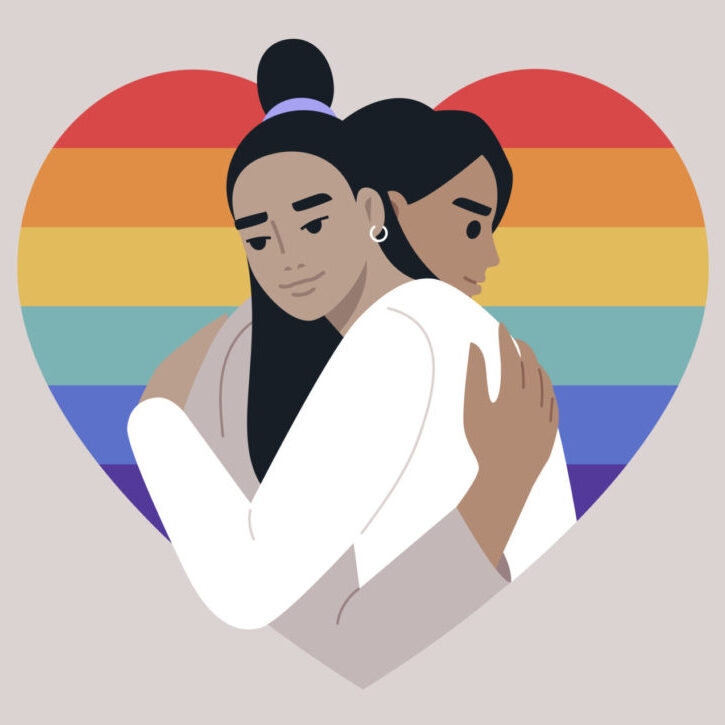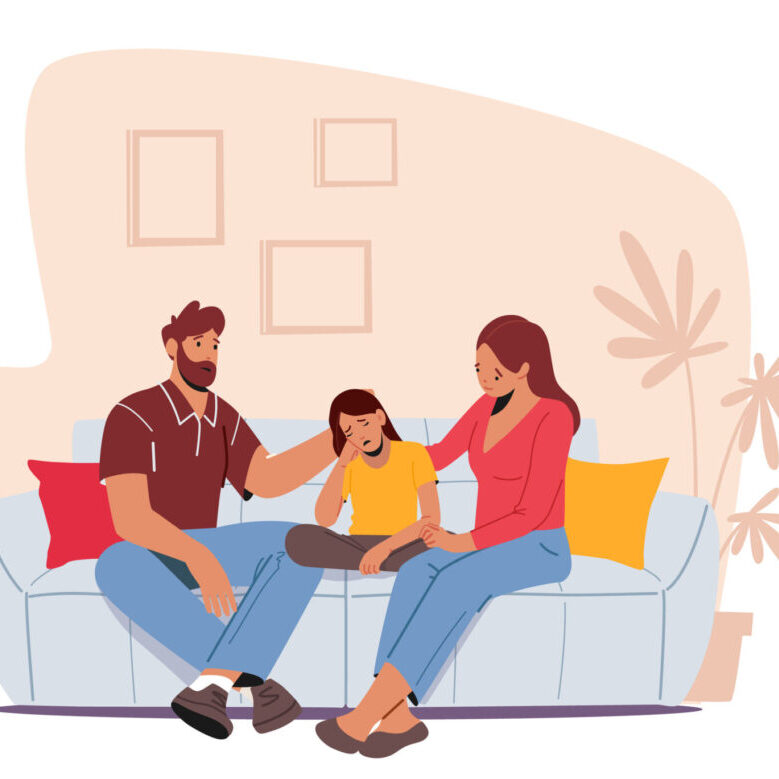Navigating the Intersection: Exploring LGBTQ+ Identity as a Neurodivergent Individual

There is a significant yet often overlooked intersection between neurodiversity and queer-LGBT identities. Neurodivergent individuals—those with neurological differences such as autism, ADHD, and other cognitive variances—face unique challenges and experiences, particularly if they also identify as queer.
Let’s explore the complexities of this intersection as a step towards fostering a more inclusive and supportive environment for all. We hope to flush out the ties that bind neurodiversity and LGBTQ identities, highlighting the need for awareness, understanding, and action in addressing the challenges faced.
What is Neurodiversity?
Neurodiversity refers to the concept that variations in brain function and behavioral traits are part of normal, natural human diversity. This term encompasses a range of conditions, including autism, ADHD, dyslexia, and other neurocognitive differences, and is grounded in the understanding that these variations should not be viewed as deficits but rather as differences that contribute to the rich tapestry of human identity.
The notion of neurodiversity emphasizes that just as biodiversity is essential for ecosystems, cognitive diversity is crucial for human communities. It challenges the traditional medical model that often pathologizes these differences, advocating instead for acceptance, support, and accommodations that allow neurodivergent individuals to thrive in their own unique ways. Said differently – some brains are just different and that is more than okay; it’s great!
Neurodiversity and LGBTQ People
An overlap exists between neurodiversity and queerness – but why? The overlap hints at a unique intersection where variations in neurocognitive processing might influence one’s relationship with societal gender norms.
For example, neurodiverse individuals often experience or perceive social cues and constructs differently, which can lead to less adherence to the strictly enforced sexual and gender roles typical of their environments.
This variance in social understanding could facilitate a natural divergence from traditional gender identities and sexual orientations, as neurodiverse individuals might not fully socialize into the “normalized” (e.g., neurotypical) frameworks commonly accepted.
Instead, neurodiverse adults often find a sense of belonging and acceptance within the LGBTQ+ community. Such environments offer a space where differences are not just accepted but valued, providing neurodiverse individuals with the freedom to express and explore their identities without the constraints imposed by mainstream societal expectations.
This potential for nonconformity is supported by emerging research and anecdotal accounts that indicate a higher occurrence of non-heterosexual orientations and gender nonconformity among those who are neurodivergent. This intersectionality not only highlights shared experiences and challenges but also underscores the need for a more nuanced understanding and support across both communities.
What Does Research on Neurominorities and Queerness Show about their Connectedness?
While research on this area is relatively new, findings consistently indicate that neurodivergent individuals are more likely to identify as LGBTQ+ compared to their neurotypical counterparts.
If you’ve delved into autism research, chances are you’ve encountered the name Professor Simon Baron-Cohen. Renowned in the field, he is associated with the Autism Research Centre in Cambridge and is credited with formulating the extreme male brain theory of autism in 2002.
Although subject to scrutiny, Baron-Cohen’s broader research has spurred investigations into the intersection of gender and autism.
In the largest study of its kind ever conducted, researchers Elizabeth Weir, Carrie Allison, and Simon Baron-Cohen (Nature Communications, 2020) surveyed 641,860 individuals who completed information on gender, neurodevelopmental and psychiatric diagnoses.
The researchers concluded that, “Compared to cisgender individuals, transgender and gender-diverse individuals have, on average, higher rates of autism, other neurodevelopmental and psychiatric diagnoses. For both autistic and non-autistic individuals, transgender and gender-diverse individuals score, on average, higher on self-report measures of autistic traits, systemizing, and sensory sensitivity, and, on average, lower on self-report measures of empathy.”
And this study isn’t the only one.
In her examination of the intersection between Autism and queer/LGBTQ+ identities, developmental and clinical psychologist Dr. Tasha Oswald reveals a notable prevalence of same-sex attraction and diverse sexual identities among those with ASD. Her findings suggest that 42-69% of individuals with ASD are attracted to the same sex or identify as part of a sexual minority, Additionally, emerging research, including a 2023 study by Young et al., indicates that adults with ADHD and queer identities tend to display more adventurous sexual behaviors and a wider range of partner preferences.
Why the Overlap between Neurodiversity and LGBTQ People?
The reasons behind the significant overlap between the neurodivergent and LGBT people remain largely speculative. However, a leading theory suggests that neurodivergent individuals, often less aware of and tethered to conventional societal norms, are more inclined to deeply explore and express their gender and sexual identities.
In a society predominantly structured around binary notions of heterosexuality and cisgender identity, neurodivergent people might experience fewer constraints from social expectations, enabling them to express their true selves with less concern for judgment or conformity.
Neurodiversity & Gender Diverse Youth: An Affirming Approach to Care (The National LGBTQIA Health Education Center, 2020) notes, “Evidence suggests that neurodiverse people, particularly those on the autism spectrum, are more likely to be gender diverse and have a lesbian, gay, bisexual, queer, or asexual sexual orientation, compared to neurotypical people.
The reasons why are not well understood. One possibility is that neurodiverse people tend to be less aware of, or less susceptible to, societal pressures and gender norms; therefore, they can express their gender identity or sexual orientation without concerns of being judged or fitting into certain roles.”
Yet, identity formation can be more difficult for people that are both queer and neurodivergent.
Identify Formation Difficulties
Identity formation can be particularly challenging for individuals who are both LGBT and neurodivergent, often due to what is known as the “double minority effect.” This effect describes the compounded challenges faced when an individual navigates multiple marginalized identities simultaneously—in this case, being both LGBT and neurodiverse.
For neurodivergent individuals, the pressure to conform to neurotypical standards can lead to “masking,” where one suppresses their natural tendencies to better blend into society. This habit of masking can extend to their sexual and gender identities as well, leading to self-censorship and restricted exploration of these aspects of their identity.
The journey of self-discovery in sexuality and gender can be fluid and evolving, yet for neurodivergent individuals, certain cognitive tendencies such as dichotomous thinking might hinder this exploration. They might struggle to consider the spectrum of identities due to a preference for clear, categorical thinking, limiting their understanding of themselves as they navigate their complex identities.
Furthermore, the vast array of options within the LGBT identity spectrum can be overwhelming, especially for those who experience decision paralysis when faced with numerous choices. This can make the process of exploring and accepting one’s LGBT identity daunting and more complicated than it might be for others. Thus, neurodivergent LGBT individuals might find themselves at a crossroads, feeling uncertain and unable to fully embrace and understand their multifaceted identities.
The Role of Therapy for Neurodiverse People Who Are LGBT
Therapy can be a vital support system for LGBT individuals who are also neurodivergent, addressing several layers of their unique experiences and challenges. Firstly, therapy provides a space where differences are normalized and validated. This is particularly important for those who may feel marginalized due to their multiple identities. By affirming these experiences, therapy helps foster a sense of acceptance and understanding.
Additionally, therapy serves an educational role. It helps clients understand not only their own identities but also how these identities may interact with the world around them, including relationships with parents, friends, colleagues, and others. This understanding can empower individuals to navigate their social environments more effectively.
For those overwhelmed by identity work, which can be complex due to the interplay between neurodivergence and LGBT identities, therapy offers guided support. A therapist can help tailor this process to align with the client’s personal values and pace the exploration in a way that feels manageable and constructive. This can involve setting specific, personalized goals and gradually working towards them in a structured manner.
Therapy also equips clients with practical skills to manage stress and regulate emotions. This is crucial, as individuals with these intersecting identities might face unique stresses or situations that trigger anxiety or distress. Learning coping strategies can provide a way to handle these challenges as they arise.
Lastly, therapy recognizes the holistic nature of an individual. While a significant focus might be on aspects related to neurodivergence and LGBT identities, therapy also opens the door to addressing a wide range of topics that contribute to a person’s overall well-being. This holistic approach ensures that all facets of a person’s life can be enhanced, providing a comprehensive support system tailored to their diverse needs.
Internal Family Systems (IFS) Therapy Well-Suited to Help
Internal Family Systems (IFS) therapy offers a distinctive and effective approach to addressing the complexities faced by individuals with neurodiversity and LGBTQ identities. This compatibility arises from several key aspects of the IFS model that resonate deeply with the needs of this intersectional group.
- IFS Embraces Diversity and Complexity – At its core, IFS therapy is built around the idea of welcoming and valuing the multiplicity of the mind. Developed by Dr. Richard Schwartz, IFS posits that the mind consists of various parts, each with its own perspectives, feelings, and motivations. This conceptualization is particularly resonant for individuals who navigate the complexities of both neurodivergence and LGBT identities. For neurodivergent individuals, who may experience the world in unique and varied ways, recognizing these parts can validate their experiences of feeling different from societal norms. For LGBT individuals, this model supports the exploration and acceptance of diverse sexual and gender identities within oneself, reflecting the natural diversity of their experiences.
- IFS Offers A Framework of Compassion and Acceptance – IFS therapy encourages an attitude of compassion and curiosity, which is crucial when dealing with parts that carry the burden of shame or trauma related to sexual orientation, gender identity, or neurodivergent traits. In IFS, no part is inherently bad, and all parts are accepted. This inclusive approach helps reduce the impact of internalized stigma and microaggressions, making it a safe space for individuals to explore all aspects of their identity without judgment. By fostering an environment of unconditional acceptance, IFS enables clients to engage with their parts more openly and honestly, facilitating deeper healing and integration.
- IFS Integrates Self-Leadership – The ultimate goal of IFS is to achieve integration and harmony among the parts, allowing the individual’s true Self—characterized by qualities such as confidence, openness, and compassion—to lead. This is particularly transformative for those at the intersection of neurodivergence and LGBT identities, who may have parts that are silenced or marginalized within their own psyche due to external prejudices or internal conflicts. As these exiled parts are reintegrated, the individual gains access to a fuller, more unified sense of self. This integration allows for a richer, more fulfilling life, as individuals can embrace and express their full identities without fear or shame.
Tandem Psychology’s team is uniquely prepared to help! Our queer affirming therapists recognize the need to understand and embrace the intersection of LGBT identities and neurodiversity. As such, we’ve trained in models of care that can help!
This blog is made for informational and educational purposes only. It is not medical advice. The information in this blog is not intended to (1) replace a one-on-one relationship with a qualified licensed health care provider, (2) create or establish a provider-patient relationship, or (3) create a duty for us to follow up with you.



